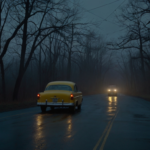Halloween, with its captivating blend of the eerie and the entertaining, stands as one of the most celebrated holidays around the globe. Its traditions, costumes, and spooky tales have roots that trace back thousands of years, woven through the tapestry of different cultures and historical periods. To understand the history of Halloween is to embark on a journey through ancient rituals, religious influences, and the evolution of a holiday that continues to captivate the imaginations of people young and old.

1. The Ancient Celtic Festival of Samhain: The True Origin of Halloween
The origins of Halloween are deeply rooted in the ancient Celtic festival of Samhain (pronounced “sow-in”), which was celebrated by the Celts more than 2,000 years ago in regions that are now Ireland, the United Kingdom, and northern France. The festival of Samhain marked the end of the harvest season and the beginning of winter, a time the Celts associated with death. The history of Halloween begins here, with a night that blurred the line between the worlds of the living and the dead.
1.1 Samhain: A Time of Transition and Fear
Samhain was celebrated on the night of October 31st, which the Celts believed was a time when the boundary between the physical world and the spirit world became permeable. They thought that on this night, the spirits of the dead returned to Earth, bringing with them both blessings and curses. The Celts would light large bonfires to honor the dead and to help guide them to the afterlife. These bonfires also served a protective function, as the Celts believed that the fires could ward off malevolent spirits.
To further protect themselves from these spirits, people would disguise themselves in costumes made from animal skins and heads. The costumes were intended to confuse or appease the spirits by making the wearer indistinguishable from the supernatural entities roaming the earth. This practice of dressing in costumes is one of the earliest traditions associated with the history of Halloween.
1.2 Divination and Fortune-Telling
Samhain was not only a time for honoring the dead but also for divination and prophecy. The Celts believed that the presence of spirits made it easier for Druids, the Celtic priests, to predict the future. These prophecies were crucial for the Celts, who relied on them for guidance through the uncertain and often harsh winter months. Many of these divination rituals involved the use of nature, such as interpreting the patterns of falling leaves or the behavior of animals.
The significance of Samhain in the history of Halloween cannot be overstated, as it laid the foundation for many of the holiday’s central themes: the connection between the living and the dead, the use of costumes, and the concept of foretelling the future.
2. Roman Influence on Halloween: The Festival of Pomona and the Christianization of Samhain
As the Roman Empire expanded and eventually conquered much of the Celtic lands, the history of Halloween began to absorb Roman traditions and customs. The Romans brought with them their own festivals and beliefs, which gradually merged with the Celtic traditions of Samhain.
2.1 Feralia and Pomona: Roman Festivals Meet Celtic Traditions
Two significant Roman festivals became intertwined with Samhain: Feralia and Pomona. Feralia was a late-October festival that commemorated the dead, similar to the themes of Samhain. It was a day when the Romans honored their ancestors and made offerings to the spirits of the deceased.
Pomona, on the other hand, was the Roman goddess of fruit and trees, and her festival celebrated the harvest of apples and other fruits. The symbol of Pomona, often depicted as an apple, is believed to be the origin of the Halloween tradition of bobbing for apples, a game that remains popular to this day.
2.2 The Spread of Christianity and the Christianization of Samhain
With the spread of Christianity across Europe, the Church sought to replace or reinterpret pagan festivals with Christian holidays. This led to a significant shift in the history of Halloween as the Church attempted to absorb Samhain into its own religious calendar.
In 609 A.D., Pope Boniface IV dedicated the Pantheon in Rome to all Christian martyrs and established the feast of All Martyrs’ Day on May 13th. Later, Pope Gregory III expanded the feast to include all saints and martyrs and moved the observance to November 1st. This day became known as All Saints’ Day, also referred to as All Hallows or Hallowmas, and it was intended to honor saints and other religious figures.
The night before All Saints’ Day, October 31st, became known as All Hallows’ Eve, which eventually evolved into Halloween. This move by the Church was an attempt to replace the pagan festival of Samhain with a Christian holiday, but many of the old traditions persisted, blending with the new religious practices to create a hybrid celebration.
3. Medieval Halloween: The Transformation of Pagan Traditions in Christian Europe
As the history of Halloween progressed into the medieval period, the holiday continued to evolve, particularly in Christian Europe. During this time, many of the customs associated with Samhain and the Roman festivals were adapted into new forms of celebration that aligned with Christian beliefs and practices.
3.1 Souling: The Medieval Beginnings of Trick-or-Treating
One of the most notable customs to emerge during the medieval period was “souling.” On All Hallows’ Eve, or Hallowtide, poor people would go from door to door, offering prayers for the souls of the dead in exchange for “soul cakes.” These small, round cakes, often marked with a cross, were given as a form of almsgiving, and in return, the recipients would promise to pray for the souls of the donors’ deceased loved ones.
This practice of souling is considered one of the earliest forms of trick-or-treating, a tradition that would later become a cornerstone of modern Halloween celebrations. The concept of going door-to-door and receiving something in return for a service, even if it’s a prayer, laid the groundwork for the trick-or-treating we know today.
3.2 Guising: The Evolution of Halloween Costumes
Another medieval tradition that contributed to the history of Halloween was “guising.” Guising involved people dressing up in costumes, often as saints, angels, or demons, and performing songs, reciting verses, or telling jokes in exchange for food or money. The costumes were not just for entertainment; they were believed to offer protection from the spirits that were thought to roam the earth during Hallowtide.
The act of guising allowed individuals to participate in the holiday’s festivities while also invoking the religious themes of the period. This tradition of dressing in costumes continued to evolve over the centuries, eventually leading to the wide variety of Halloween costumes we see today.
3.3 The Church’s Influence and the Persistence of Pagan Customs
Despite the Church’s efforts to Christianize the celebration of Halloween, many of the old pagan customs persisted, particularly in rural areas. The bonfires that were once lit to honor the dead during Samhain continued to be a part of the festivities, now reinterpreted as a way to ward off evil spirits. These fires, along with other pagan customs, were often tolerated by the Church as long as they were practiced in a Christian context.
The history of Halloween during the medieval period is a testament to the resilience of cultural traditions, even in the face of significant religious and societal changes. The blending of pagan and Christian elements during this time laid the foundation for the Halloween we recognize today.
4. Halloween in the New World: The American Transformation of an Ancient Tradition
The history of Halloween took a significant turn when European settlers, particularly the Irish and Scottish immigrants, brought their customs and traditions to the New World. In colonial America, Halloween was not initially a widely celebrated holiday, especially in the more rigidly Protestant regions where its pagan origins were frowned upon.
4.1 Halloween in Colonial America: A Patchwork of Traditions
In the early colonial period, Halloween was primarily celebrated in the southern colonies, where the mix of European traditions began to merge with Native American customs. These early celebrations were more about the harvest and communal gatherings, rather than the Halloween we know today.
It wasn’t until the mid-19th century, with the arrival of a massive wave of Irish immigrants fleeing the Great Famine, that Halloween began to take on the characteristics that would eventually lead to its widespread popularity in the United States. The Irish brought with them the traditions of Samhain, including the practice of carving turnips into lanterns to ward off evil spirits.
4.2 The Rise of the Jack-o’-Lantern
One of the most iconic symbols of Halloween, the jack-o’-lantern, has its origins in Irish folklore. According to legend, a man named Stingy Jack tricked the Devil and was condemned to roam the earth with only a carved-out turnip and a burning coal to light his way. The Irish would carve faces into turnips and place them in windows or near doors to frighten away Stingy Jack and other wandering spirits.
When the Irish immigrants arrived in America, they found that pumpkins, native to the New World, were much easier to carve than turnips. Thus, the pumpkin became the preferred medium for creating jack-o’-lanterns, and it remains a central part of Halloween celebrations today.
4.3 The Evolution of Halloween in the 19th and 20th Centuries
By the late 19th century, Halloween in America began to evolve into a more community-centered holiday, with parties, parades, and festive gatherings. The focus shifted from the macabre and supernatural to more lighthearted and family-friendly activities. Halloween parties often featured games, autumnal foods, and festive costumes, which further contributed to the holiday’s growing popularity.
The early 20th century saw the commercialization of Halloween, with the production of costumes, decorations, and candy becoming big business. Trick-or-treating, which had its roots in the practices of souling and guising, became a widespread activity during this time, particularly after World War II. The practice was encouraged as a safe and wholesome way for children to celebrate the holiday, further solidifying Halloween’s place in American culture.
5. Modern Halloween: A Global Celebration of the Spooky and the Spectacular
Today, Halloween is celebrated in many countries around the world, each with its own unique twist on the holiday’s traditions. The history of Halloween has evolved from ancient rituals and religious observances to a modern-day celebration that is as much about fun and creativity as it is about the supernatural.
5.1 Halloween Around the World
While Halloween is most widely celebrated in the United States, Canada, and the United Kingdom, the holiday has also gained popularity in countries such as Australia, Japan, and Germany. Each of these countries has adopted Halloween in its own way, often blending it with local customs and traditions.
- In Mexico, Halloween is closely tied to the Day of the Dead (Día de los Muertos), a multi-day holiday that honors deceased loved ones. While the two holidays are distinct, the proximity of their dates has led to some crossover in traditions, such as the use of sugar skulls and the creation of elaborate altars.
- In Japan, Halloween has become a major event, particularly in urban areas like Tokyo. The Japanese celebration of Halloween is heavily influenced by the American version, with a strong emphasis on costumes and parades. However, it also incorporates elements of Japanese pop culture, such as anime and manga, making it a unique and vibrant celebration.
- In Germany, Halloween has gained popularity in recent decades, especially among younger generations. The holiday is celebrated with costume parties, pumpkin carving, and trick-or-treating, although it is often seen as an imported custom rather than a traditional one.
5.2 The Commercialization of Halloween
The commercialization of Halloween has played a significant role in shaping the modern celebration of the holiday. In the United States alone, Halloween has become a multi-billion-dollar industry, with spending on costumes, decorations, candy, and parties reaching new heights each year.
This commercialization has also led to the expansion of Halloween beyond its traditional boundaries. Halloween-themed events and attractions, such as haunted houses, pumpkin patches, and horror film marathons, have become an integral part of the holiday season. These events capitalize on the public’s fascination with the spooky and the supernatural, while also providing entertainment for people of all ages.
5.3 The Cultural Impact of Halloween
Halloween’s influence extends beyond just the holiday itself. It has become a cultural phenomenon, inspiring everything from literature and films to music and fashion. The themes of Halloween, such as fear, death, and the supernatural, have provided endless material for artists, writers, and filmmakers to explore.
In the world of cinema, Halloween has inspired countless horror films, many of which have become classics in their own right. The 1978 film “Halloween,” directed by John Carpenter, is one of the most iconic horror movies of all time and has had a lasting impact on the genre.
In literature, Halloween has inspired works of gothic fiction, horror stories, and even children’s books. Authors like Edgar Allan Poe and H.P. Lovecraft have drawn on the themes of Halloween to create some of the most chilling and enduring tales in the literary canon.
6. The Future of Halloween: Trends and Innovations
As we look to the future, the history of Halloween is likely to continue evolving, with new trends and innovations shaping the way we celebrate the holiday. The rise of digital technology, social media, and global connectivity has already begun to influence Halloween in ways that were unimaginable just a few decades ago.
6.1 Virtual and Augmented Reality
One of the most exciting developments in the world of Halloween is the use of virtual and augmented reality (VR and AR) to create immersive and interactive experiences. These technologies have the potential to transform Halloween attractions, allowing participants to step into fully-realized virtual haunted houses or engage with digital spirits in real-time.
As VR and AR technology becomes more accessible, we can expect to see a growing number of Halloween experiences that blend the physical and digital worlds. These innovations will likely appeal to a new generation of Halloween enthusiasts who are eager to embrace the latest in cutting-edge entertainment.
6.2 Sustainability and Eco-Friendly Celebrations
As awareness of environmental issues continues to grow, there is an increasing demand for sustainable and eco-friendly Halloween celebrations. This trend is likely to influence everything from costume design to party decorations, with a focus on reducing waste and promoting environmentally-conscious practices.
For example, there is a growing movement towards creating DIY costumes from recycled materials, as well as using natural or reusable decorations instead of single-use plastic items. This shift towards sustainability may also extend to Halloween candy, with more consumers seeking out organic, fair-trade, or locally-produced treats.
6.3 Cultural Sensitivity and Inclusivity
In recent years, there has been a greater emphasis on cultural sensitivity and inclusivity in Halloween celebrations. As the holiday continues to spread across the globe, it is important to recognize and respect the diverse cultural traditions that have contributed to its rich history.
This means being mindful of cultural appropriation when choosing costumes or decorations, as well as embracing the opportunity to learn about and celebrate the traditions of other cultures. By promoting inclusivity and understanding, Halloween can continue to be a holiday that brings people together, regardless of their background or beliefs.
7. Conclusion: The Ever-Evolving Legacy of Halloween
The history of Halloween is a story of constant evolution, shaped by the beliefs, traditions, and innovations of countless generations. From its origins in the ancient Celtic festival of Samhain to its modern-day celebration as a global holiday, Halloween has proven to be a resilient and adaptable tradition, capable of transcending cultural and temporal boundaries.
As we continue to celebrate Halloween in the 21st century, we do so with an understanding that this holiday is more than just costumes, candy, and spooky decorations. It is a reflection of our collective desire to connect with the past, confront our fears, and find joy in the midst of darkness.
Whether you are carving a pumpkin, donning a costume, or sharing ghost stories with friends, remember that you are participating in a tradition that stretches back thousands of years. The history of Halloween is rich with meaning and significance, and it is a testament to the enduring power of this holiday that it continues to capture our imaginations year after year.

















































